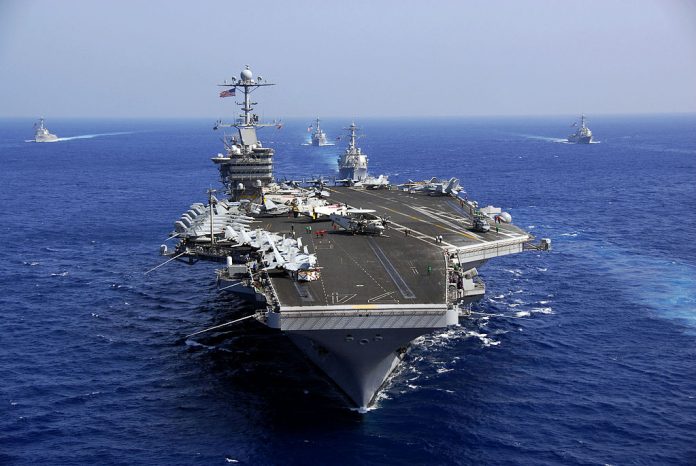The 2003 invasion of Iraq spelled nostalgia in the world stage regarding United States when it repudiated the United Nations Security Council to topple Iraqi leader, Saddam Hussein. Accordingly, Iraq allegedly harbored Weapons of Mass Destruction (WMD) and was willing to hand them over to Al-Qaeda, the group who confessed as the mastermind of the 9/11 attacks. With an unchallenged military power, the United States led the so-called Coalition of the Willing and successfully defeated the Iraqi military in just three weeks and established a provisional government.
After months of occupation, the coalition did not expect to easily slip on quicksand when conventional fighting turned into counterinsurgency operations to destroy remaining Saddam loyalists and Al-Qaeda in Iraq (AQI), an offshoot of the Islamic State of Iraq and Syria (ISIS). But starting in 2007, the coalition has decreased its willingness because the worth of joining has become more intangible.
Years passed, and no WMDs were found in Iraqi soil until the last American ground presence in 2011. The coalition members have joined American leadership because of speculations and paranoia of an unholy alliance between a rogue state and terrorists fed to them.
American Paranoia on China?
When China’s rise to power became noticed, especially with President Xi Jinping’s ascent to power in late 2012, questions mounted regarding the American paranoia when it pivoted to Asia. Others were unsure if it intends to make another fabricated story to undermine China this time.
Yet the author argues that the states in the Indo-Pacific are becoming more gravitated towards the U.S., not because of American-made fabricated lies against China, but of their shared experience regarding Chinese revisionism in their backyard. As China continues to be more aggressive in its rightful place in the world, the states in the region are becoming more like-minded with the U.S. in upholding the rules-based international order.
The U.S. has tried several attempts to welcome China as a “responsible stakeholder” from the early 2000s. However, it assumed that China would democratize. Thanks to Xi, all hopes for a liberal China were discarded. With Xi’s dream for the “great rejuvenation of the Chinese nation,” Beijing has made it clear that it seeks to revise the rules-based order starting from its strategic backyard.
Charles L. Glaser wrote that China would rise peacefully so long as the U.S. does not provoke it by calibrating U.S. policy to deter attacks against its vital interests while not posing a serious threat to Chinese security. But recent developments about the Indo-Pacific states’ shared experience with China provide a convincing point that the Chinese rise will increasingly become more unpeaceful with or without an American presence.
The Shared Experience
In Southeast Asia, the Association of the Southeast Asian Nations (ASEAN) upheld the 1982 United Nations Convention on the Law of the Sea (UNCLOS) during the 36th ASEAN Summit in June 2020. It also reaffirmed the 2019 ASEAN Outlook in the Indo-Pacific (AOIP). This resolve was a culmination after Indonesia, Malaysia, the Philippines, and Vietnam have had a share of experience of Chinese gray zone operations in the South China Sea (SCS).
Hong Kong’s democracy was finally doomed when Beijing passed the National Security Law in June 2020. This move received international criticism, including Australia, who offered citizenship to Hong Kong dissidents.
The said disrespect for the 50-year transition in Hong Kong induced fears in Taiwan, claiming that Beijing would not consider peaceful reunification anymore. Nevertheless, Taipei refuses to fall on its knees as Taiwanese military exercises in 2020 continue to demonstrate it. This kind of bravado points how inevitable the American role is in the Cross-Strait relations ever since Washington elevated Taiwan into an official partner in the region in 2019.
Australia and Japan saw a no-chill China amid tumultuous times. Australian Prime Minister Scott Morrison asserted that Canberra will not be intimidated by the Chinese trade tariff after it pressured Beijing to accept an international inquiry into China’s handling of the COVID-19 pandemic. Japan continues to express its woes against China when the latter’s aircraft carrier sailed in the East China Sea (ECS). Moreover, Tokyo protested the Chinese Coast Guard’s (CCG) harassment of Japanese fishing vessels in the disputed area in the ECS.
India has been an outlier for the U.S. when it comes to bringing it along in the ‘Quad’ with Australia and Japan. Prime Minister Narendra Modi’s nonaligned policy has tried to bolster its relationship with China considering their longstanding border dispute in the Line of Actual Control (LAC).
After years of appeasement, India is increasingly pushed towards the U.S. after a border clash in the Ladakh region occurred on June 16, 2020. A ‘fistfight brawl’ which killed 20 Indian soldiers. On July 03, 2020, Modi sent a strong message to China by giving a surprise visit to the Ladakh. Unlike past encounters, Modi’s action provides a ‘game-changer‘ to its threat perception towards China. On July 06, 2020, Chinese military has pulled back in Ladakh, claiming that India cannot afford a fight.
The Convergence and the Case for Leadership
Under President Donald Trump, the U.S. has made it clear that Chinese revisionism has no place in a Free and Open Indo-Pacific (FOIP). In an upcoming post-COVID-19 pandemic scenario, the Sino-American competition is expected to increase in the Indo-Pacific. The U.S. Secretary of State Mike Pompeo said in a statement that they would not allow China to treat the SCS as its “maritime empire” and called them to abide by the 2016 Arbitral Tribunal decision. This unprecedented and stronger policy effectively makes Washington as the leading defender of the 2016 Arbitral Tribunal decision.
Since July 2020, the U.S, Japan, and Australia have intensified their activities, such as deepened intelligence-sharing, to better track Chinese activities. They also conducted maritime exercise in the Philippine Sea. India has expressed its intent to increase presence in the SCS and is willing to let its partners join the Malabar Naval Exercise.
China has repeatedly questioned American presence in its backyard, accusing Washington of displaying hegemonic politics through Freedom of Navigation Operations (FONOPS) in the SCS, ECS, and the Taiwan Strait. Beijing replies to Pompeo’s statement that the U.S. is a meddler of regional disputes and flexes its muscles wherever and whenever they want to.
Fan Gaoye argues that the FOIP strategy is doomed to fail because it is one-sided. However, recent events in the Indo-Pacific provide enough points that the Indo-Pacific states do not remain nostalgic regarding the Bush doctrine – defying the rules for American interest because it can do so. China portrays it otherwise in the eyes of U.S. allies and partners in the region.
To tell the world that the U.S. is paranoid over China’s rise is valid insofar as remembering the invasion of Iraq. But as far as examining the case of the states in the Indo-Pacific, the China threat is real. The Indo-Pacific states are beginning to carve a waking need to balance China by gravitating towards American leadership based on their woes against Chinese revisionism on the rules-based international order in their backyard. Against this backdrop, American leadership, although imperfect, is still needed.
The views and opinions expressed in this article are those of the author.

The author is a Manila-based defense analyst and international affairs academic who works and writes about issues and topics regarding the Great Power Politics of the Indo-Pacific, Philippine Strategic Culture, and ASEAN Studies. He currently pursues his master’s degree in International Studies at the University of the Philippines, Diliman.


